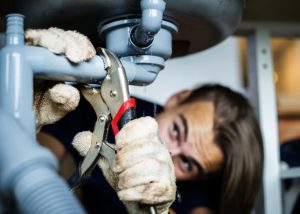Expose Hidden Water Line Leaks: 6 Proven Techniques for Detecting
Expose Hidden Water Line Leaks: 6 Proven Techniques for Detecting
Blog Article
Here in the next paragraph yow will discover a bunch of great data in regards to Detecting hidden plumbing leaks.

Early discovery of dripping water lines can reduce a prospective calamity. Besides conserving you cash, it will minimize the aggravation as well as irritation. The minute you find a leak, calling your plumber for repair services is the most effective service. Some tiny water leakages might not be noticeable. Below are some hacks that help if you can not discover it with your nude eyes.
1. Check Out the Water Meter
Every residence has a water meter. Checking it is a surefire manner in which aids you uncover leakages. For starters, turn off all the water sources. Guarantee no one will certainly purge, make use of the faucet, shower, run the cleaning maker or dishwasher. From there, go to the meter and also watch if it will alter. Given that no one is using it, there ought to be no motions. That indicates a fast-moving leak if it relocates. Similarly, if you discover no changes, wait an hour or two as well as check back again. This indicates you might have a sluggish leak that might even be underground.
2. Examine Water Intake
Examine your water expenses and track your water consumption. As the one paying it, you should observe if there are any type of inconsistencies. If you spot sudden changes, regardless of your intake coinciding, it implies that you have leaks in your plumbing system. Keep in mind, your water bill ought to fall under the very same variety every month. An unexpected spike in your costs shows a fast-moving leak.
Meanwhile, a consistent increase every month, despite the very same habits, shows you have a slow leakage that's also gradually escalating. Call a plumber to thoroughly inspect your residential or commercial property, particularly if you feel a cozy area on your flooring with piping below.
3. Do a Food Coloring Test
30% comes from toilets when it comes to water usage. Examination to see if they are running correctly. Decline specks of food shade in the container and wait 10 mins. If the color in some way infiltrates your bowl during that time without flushing, there's a leak in between the tank as well as dish.
4. Asses Outside Lines
Do not forget to inspect your outside water lines also. Examination spigots by attaching a garden hose pipe. Must water seep out of the connection, you have a loose rubber gasket. Change this as well as ensure all links are tight. If you have actually got a sprinkler system, it will certainly aid get it skillfully examined as well as maintained annually. One tiny leakage can throw away lots of water and spike your water expense.
5. Analyze the situation as well as check
Homeowners ought to make it a practice to examine under the sink counters and also also inside closets for any type of bad odor or mold and mildew development. These 2 red flags indicate a leak so prompt focus is called for. Doing regular assessments, also bi-annually, can conserve you from a major problem.
Examine for discolorations and also compromising as the majority of devices and pipelines have a life expectancy. If you presume dripping water lines in your plumbing system, do not wait for it to intensify.
Early discovery of leaking water lines can minimize a possible catastrophe. Some little water leaks may not be noticeable. Checking it is a guaranteed means that helps you find leaks. One little leak can lose bunches of water and increase your water bill.
If you presume dripping water lines in your plumbing system, don't wait for it to intensify.
The Dangers of Undetected Water Leaks
Mold
One of the most common results of undetected water leaks in your home is mold. Under the right conditions, mold can begin to grow and spread in just a day or two.
Moisture from water leaks combined with humidity and lack of ventilation allow mold spores to germinate and start spreading.
And while household mold doesn’t carry the same health risks as substances like asbestos, they can cause allergic reactions in people sensitive to them or with asthma.
Structural Damage
When water leaks occur in places we can’t see — above the ceiling, behind walls or beneath floors — they often have time to do some serious damage before making themselves known.
You might notice cracks or bubbles appear in your walls or a slow drip or water from the ceiling.
These are signs of water leaks and buildups in the structure of your home. If you don’t jump on these problems soon enough, the wood frame that supports your house could start rotting, leading to costly repairs and increasing the risk of disasters like ceiling or wall collapses.
Water Waste
According to the Alliance for Water Efficiency, the average home can lose anywhere from 2,000 to 20,000 gallons of water per year due to leaks.
High numbers like that might make you imagine a burst pipe spewing out water. But believe it or not, even a small, constant drip from a kitchen sink could add up to over a thousand gallons of wasted water in a single year.
And if you live in a place where you pay for every gallon of water you use, that adds up to a lot of dollars down the drain. So we understand leaks are bad. Let’s take a look at some of the common (and not-so- common) water leaks you might find around your home.
Flush Valve Flapper
The flush valve flapper is a rubber flap that sits above the flush valve at the bottom of the tank. It’s attached to the flusher with a chain. Over time, it can get worn out and lose its seal, causing an endless flow of water into the toilet bowl.
These leaks are hard to detect since they’re usually silent, but there’s a little insider trick you can use with just a little dye or food coloring:
Put a few drops in the toilet tank. Check the water in your toilet bowl 15 minutes later. If any of the color made it into the toilet bowl, you’ll know what the culprit is.
Fill Valve
The fill valve is what replenishes your toilet’s tank water after you flush. If you’ve ever looked inside your toilet tank and seen water gushing out of an upright plastic valve, that’s a faulty fill valve.
https://meetflo.com/blogs/flo/how-to-find-and-repair-water-leaks-a-comprehensive-guide

As a fervent reader on Leaking water lines, I was thinking sharing that excerpt was beneficial. Sharing is nice. Helping others is fun. We treasure reading our article about Finding hidden leaks.
Need quality service? Report this page